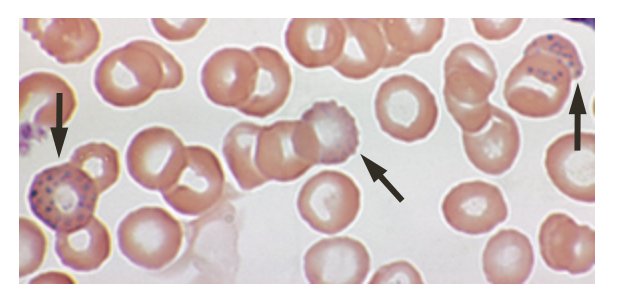Lead poisoning laboratory findings: Difference between revisions
Jump to navigation
Jump to search
No edit summary |
|||
| Line 5: | Line 5: | ||
==Overview== | ==Overview== | ||
Elevated venous blood lead levels and basophilic stippling of red blood cells on peripheral smear are the the most important and diagnostic findings in [[lead poisoning]]. | Elevated venous blood lead levels and basophilic stippling of red blood cells on peripheral smear are the the most important and diagnostic laboratory findings in [[lead poisoning]]. | ||
==Laboratory Findings== | ==Laboratory Findings== | ||
Latest revision as of 15:47, 15 August 2018
|
Lead poisoning Microchapters |
|
Diagnosis |
|---|
|
Treatment |
|
Case Studies |
|
Lead poisoning laboratory findings On the Web |
|
American Roentgen Ray Society Images of Lead poisoning laboratory findings |
|
Risk calculators and risk factors for Lead poisoning laboratory findings |
Editor-In-Chief: C. Michael Gibson, M.S., M.D. [1]; Associate Editor(s)-in-Chief: Aksiniya Stevasarova, M.D.
Overview
Elevated venous blood lead levels and basophilic stippling of red blood cells on peripheral smear are the the most important and diagnostic laboratory findings in lead poisoning.
Laboratory Findings
- Laboratory findings consistent with the diagnosis of lead poisoning include:
- Basophilic stippling of red blood cells [1]
- Iron deficiency anemia (microcytosis and hypochromia) [2]
- Elevated venous blood lead levels
- K-fluorescent X-ray metering can measure bone-lead.
Shown below is an image depicting basophilic stippling in a blood smear of a patient with lead poisoning.

References
- ↑ Chan NCN, Chan KP (2017). "Coarse basophilic stippling in lead poisoning". Blood. 129 (24): 3270. doi:10.1182/blood-2017-03-773499. PMID 28620106.
- ↑ Hoffmanová I, Kačírková P, Kučerová I, Ševčík R, Sánchez D (2016). "[Lead poisoning. A surprising cause of constipation, abdominal pain and anemia]". Vnitr Lek. 62 (2): 157–63. PMID 27172444.